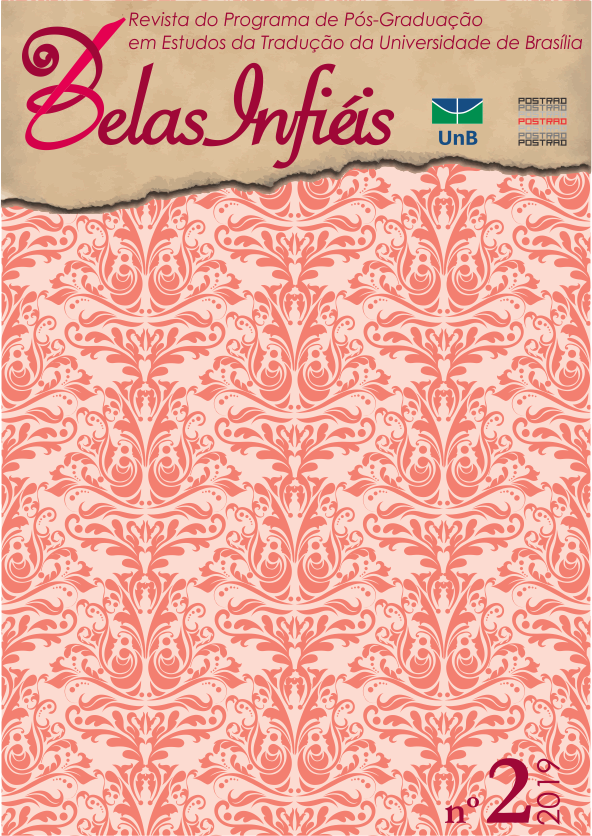An Anthological Presence. The translation of Kathleen Raine’s poetry into Spanish
DOI:
https://doi.org/10.26512/belasinfieis.v8.n2.2019.24382Keywords:
Poetry Translation. Kathleen Raine. The Presence. (Translator’s) Anthologies.Abstract
This paper has two main goals. After presenting some of the problems that characterize poetry translation, it reviews the poetic presence of Kathleen Raine (1908-2003) in Spanish translation. Secondly, on the basis of a case study, the analysis seeks to identify the particular characteristics and challenges posed by the translation of Raine’s poetry into Spanish. Within Spanish letters, the poetic voice of Raine is signaled and constituted by an anthological existence, which necessarily endows it with a fragmentary, incomplete character. Moreover, the fragmentariness implied in every anthology is reflected in the translation strategies and techniques at stake in translation. To test our hypothesis, the case study, constituted by the poetic collection The Presence (RAINE, 1987), centers on the detailed examination of the Spanish translation of the poem “The Presence”, included in the anthology Fragmentos de una visión sagrada (RAINE [Transl.: Alzueta Jesús], 2006). The consideration of the French version of the poem, included in the collection La Présence (RAINE [Transl.: Giraudon], 2003), makes an interesting counterpoint to assess the expressive possibilities of translation within two Romance languages. This analysis highlights the procedures used to materialize Raine’s distinctive style and the techniques developed to recreate such style in translation.
Downloads
Downloads
Published
How to Cite
Issue
Section
License
Given the public access to this journal, the texts are free to use but requires the recognition of the original authorship and initial publication in this journal to be properly stated.
 The journal allows the use of works published for non-commercial purposes, including the right to submit the work to publicly accessible databases. Published contributions are the sole and exclusive responsibility of the author(s).Â



















